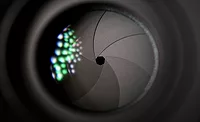Changing the Insurance/Arrests/Alarms Paradigm
Security: I have heard you are resurrecting “Law Enforcement Loss control” working with the industry (SIA, CSAA, ESA) and law enforcement (IACP, Natl. Sheriffs Assn.) and the insurers. What does that mean?
Keith Jentoft: I have been spending the bulk of the last 12 months working to rebuild the insurance/arrests/alarms paradigm that created our industry. Insurance underwriters created the alarm industry in the early 1900s. They mandated the banks and jewelry stores install alarm systems before they would issue insurance - police responding to alarms made arrests and insurance claims went down. The system worked and delivered value to each partner. Insurers saved money, police made arrests and the security industry installed and monitored the alarms that made it possible. This strong relationship lasted until the 1970s when the context changed. With the exploding stock market, insurers found profitability in investment income instead of reducing claims. Digital dialers enabled mass marketing of burglar alarms, creating the false-alarm problems as companies began selling deterrence instead of arrests. Law enforcement grew disenchanted; false alarms and degraded response meant that law enforcement no longer made arrests – the relationship died. Instead, the industry faced the new threat of “non-response.”
Security:Everybody has heard of the problems of “non-response,” and how this threatens the RMR business model? Why do the insurers care?
Keith Jentoft: The insurance companies currently have a financial gun to their head. In the past 5 years, with the crash of the markets and eroding investments, the insurance industry was forced back to the business model of making money the old fashioned way- reducing claims and losses. The financial crisis also means there are fewer businesses to insure, a shrinking market to insure. Declining law enforcement budgets created new pressures on police and sheriffs. Property crime became less important. For the alarm industry this meant pressure towards “non-response.” Declining police budgets/resources meant “non- investigation” for insurers as overworked officers began saying, “It is only a property crime and it is insured anyways.” Non-investigation is extremely bad news for an insurer.Eighty-five percent of all property crimes are paid for by insurers, in a market where loss control is the key issue to profitability. The insurers need to find ways to reduce claims for property crime.
Thankfully for the alarm industry, the answer is the same now as it was in the 1900s, law enforcement and technology. Videofied sees this as an opportunity. We have been actively rebuilding relationships with law enforcement with video intrusion alarms that deliver arrests. We developed the Priority Response concept, an arrest-centric approach where law enforcement gives priority response to video alarms – alarms verified by remote video as crimes-in-progress. This paradigm has its foundations in the partnership that created our industry. A recent case study by the IACP (Intl. Assn. of Chiefs of Police) documented 30 Videofied systems in Detroit that, over the course of a school year, delivers a 70% arrest rate; 101 burglaries, 70 arrests of 123 people.
Security: Insurers have a problem with property crime losses; law enforcement wants to make arrests. So what? How does this affect the security industry?
Keith Jentoft: That is the point! Video intrusion alarms meet the requirements of BOTH the insurers and law enforcement. Priority response to crimes-in-progress delivers arrests and reduces claims. There is value again to all parties.
Security: Again, so what? Why is this big deal? How does that change the game?
Keith Jentoft: ROI. This partnership means that there is funding to upgrade the installed base of traditional systems to video intrusion alarms. Insurers care so much about loss control that they are willing to push their policy holders to adopt video alarms to reduce claims. Insurers are now subsidizing video intrusion alarms though premium discounts and even waiving the deductibles so that their clients install these systems. Insurers have both the motivation and the power to mandate that their policy holders upgrade their alarm systems for “law enforcement loss control.” Priority Response and Video Intrusion Alarms are the foundation for resurrecting the insurer/law enforcement/alarm partnership that was crucial to the birth of the security industry and just as significant as deploy the next generation of alarm systems.
Read more about Videofied at: www.videofied.comor www.coppertheft.info
Looking for a reprint of this article?
From high-res PDFs to custom plaques, order your copy today!







